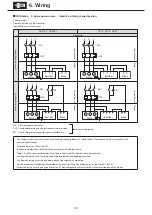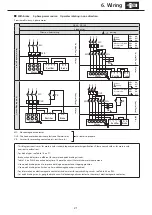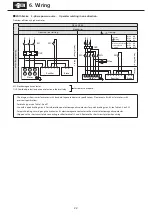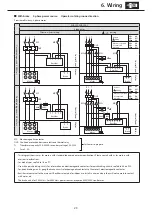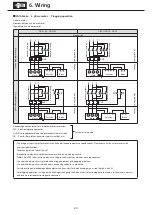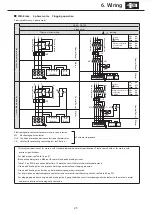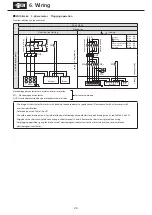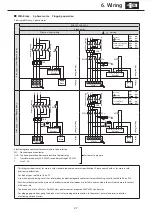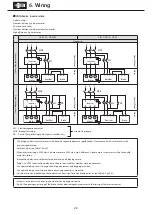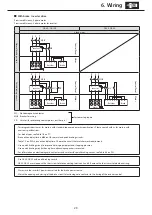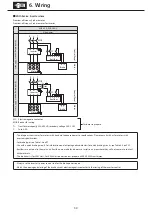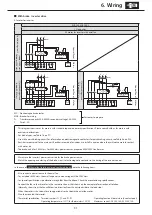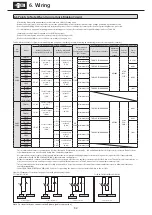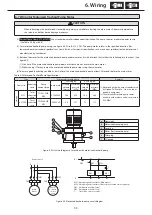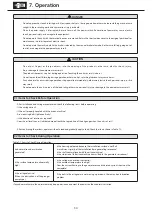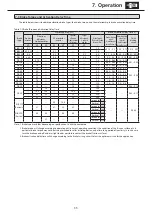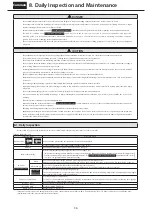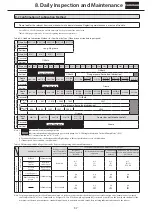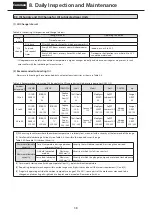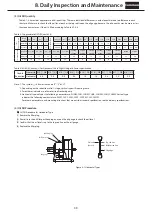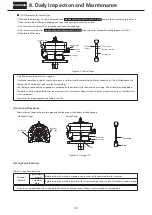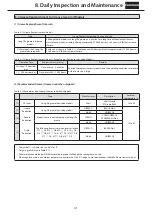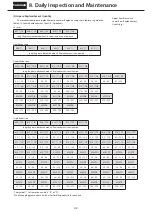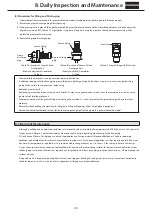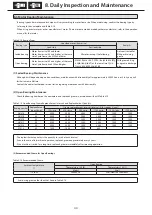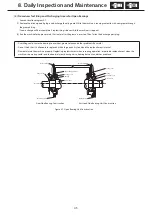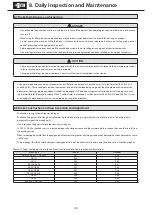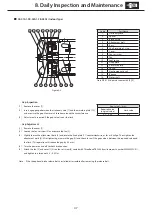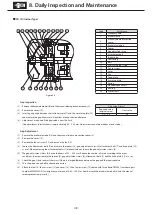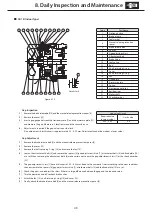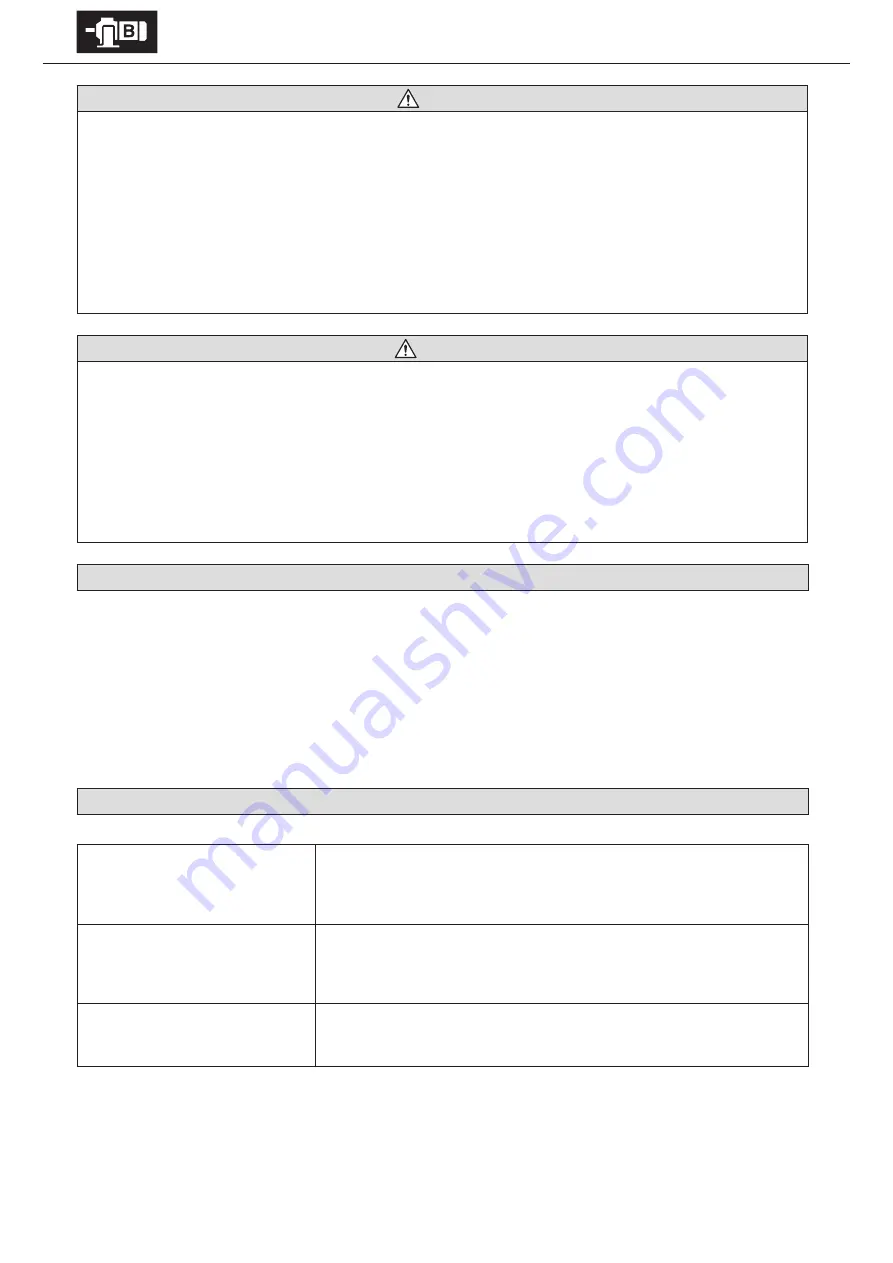
34
7. Operation
DANGER
- Do not approach or touch rotating parts (slow speed shaft, etc.) during operation; otherwise loose clothing may became
caught in these rotating parts and cause serious injury or death.
- When the power supply is interrupted, be sure to turn off the power switch. Restoration of power may cause electric
shock, personal injury, or damage to the equipment.
- Do not operate the unit with the terminal box cover removed. Return the terminal box cover to the original position after
maintenance, in order to prevent electric shock.
- Do not operate the machine while the brake is released by the manual brake release bolt; otherwise, falling, going out of
control, or damage to the equipment may result.
CAUTION
- Do not put fingers or foreign objects into the opening of the products; otherwise, electric shock, injury,
fire, or damage to the equipment may result.
- The products becomes very hot during operation. Touching the unit may result in burns.
- Do not loosen the oil filler plug during operation; otherwise, hot, splashing lubricant may cause burns.
- If any abnormality occurs during operation, stop operation immediately; otherwise, electric shock, personal injury, or fire
may result.
- Do not operate the unit in excess of the load rating; otherwise, personal injury, or damage to the equipment may result.
7-1 Items to Check Before Operation
After installation and wiring are completed, check the following items before operating.
- Is the wiring correct?
- Is the unit properly coupled with the driven machine?
- Are mounting bolts tightened firmly?
- Is the direction of rotation as required?
- Does the oil level in an oil-lubricated model reach the top red line of the oil gauge when the unit is at rest?
After confirming these items, operate without a load and gradually apply a load. Check the items shown in Table 7-1.
7-2 Items to Check During Operation
Table 7-1 Items to Check During Operation
Is abnormal sound or vibration
generated?
- Is the housing deformed because the installation surface is not flat?
- Is insufficient rigidity of the installation base generating resonance?
- Is the shaft center aligned with the driven machine?
- Is the vibration of the driven machine transmitted to the gearmotor or reducer?
Is the surface temperature abnormally
high?
- Is the voltage rise or drop substantial?
- Is the ambient temperature too high?
- Does the current flowing to the gearmotor exceed the rated current shown on the
nameplate?
Is the oil signal active?
(When the lubrication is of the plunger
pump type.)
- If the balls in the oil signal are not moving up or down, there may be a lubrication
problem.
If any abnormalities are found, immediately stop operation and contact the nearest authorized service station.

